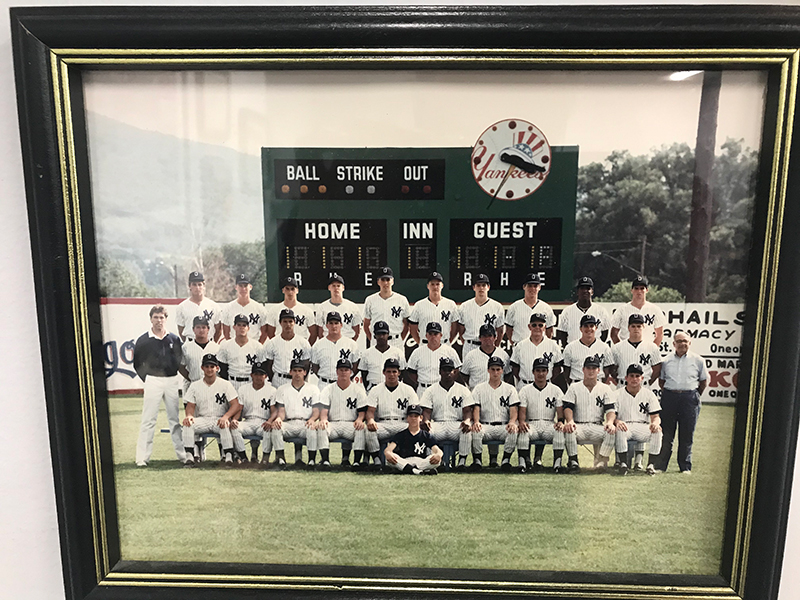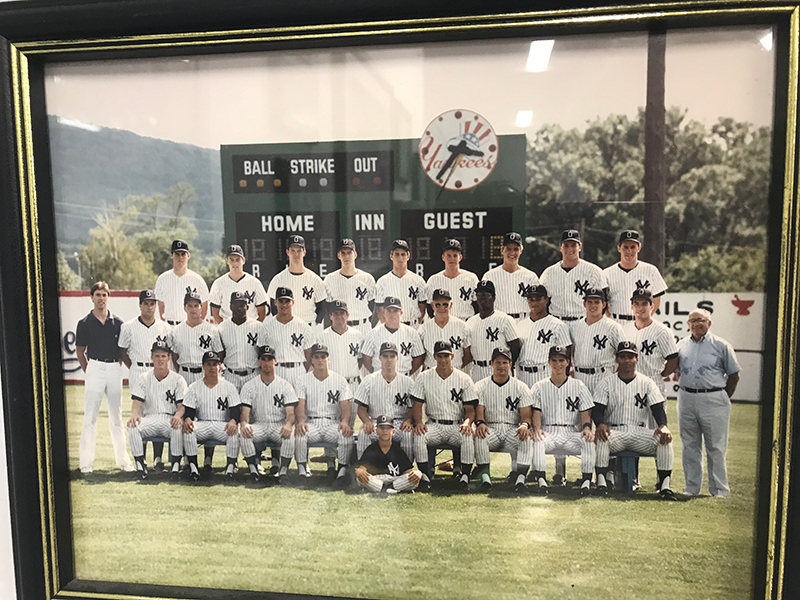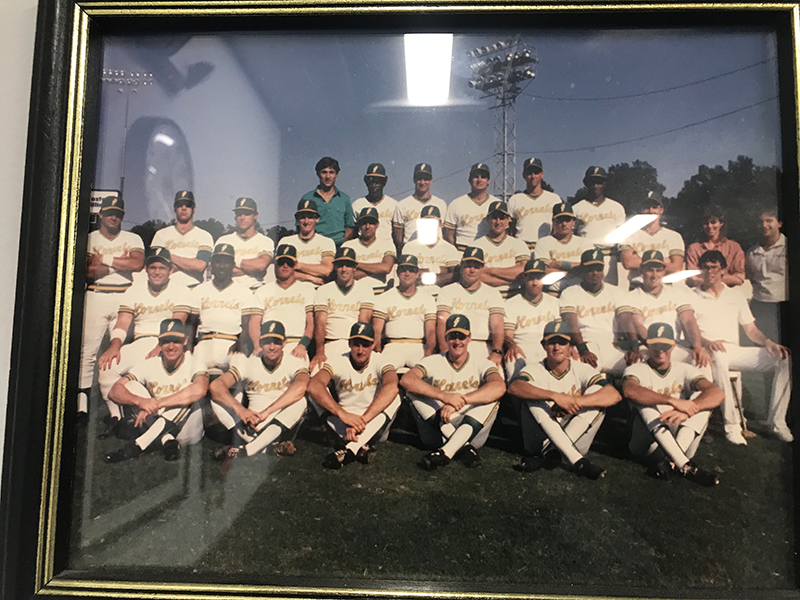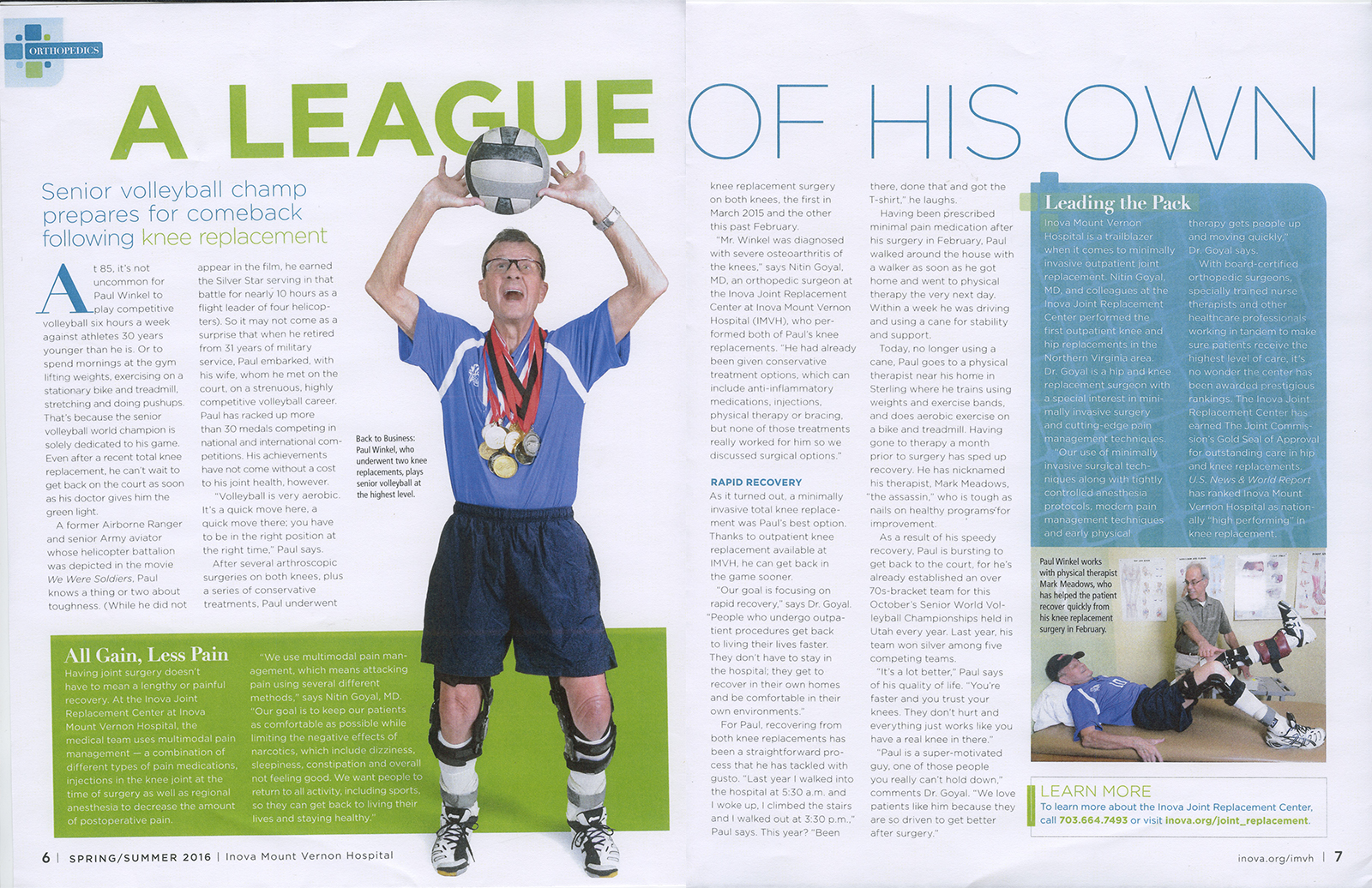Services
Contact us for information on additional or specialty programs you may need.
Can you beat your shoulder or back pain before it beats you?
The shoulders and back you have today, are the only ones you are going to have.
Having treated a large number of patients over the past 30 years, our research has found factors consistent with shoulder and low back injuries. Not only does the elimination of these factors enhance the recovery from the injury, but have also been found to be a consistent part of enhanced shoulder or back performance. Muscular and postural dysfunction can continue without pain, until the inflamed tissue can take no more and inflammation ensues.
Give us a call for a free consultation and see how we can help you.
Does your Sports Medicine practitioner bring years of professional sports experience?
Pronation
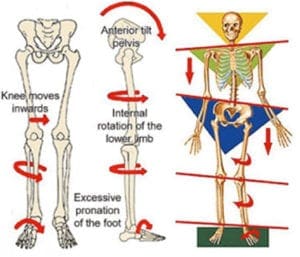
What is pronation, which we hear about frequently with running injuries? In the cycle of walking, as we proceed from heel strike, we take the body weight through the foot as we advance towards the toes to push off. The mid tarsal or mid-foot joints unlock allowing the arch to descend and weight shift towards the big toe. The calcaneus , or heel bone, will be seen to “ evert “ or move to the side, allowing the arch to descend. This is common to people and often leads to a variety of injuries or ailments.
Along with the arch descending, the Tibia of the lower leg rotated inwards and can subtly bring the femur along with it. This can create the kneecap or patella being positioned more laterally and causing patello-femoral pain. Then rotation of the femur is frequently seen to yield hip tightness and a positional weakness of the Gluteus Medius muscle. The rotation of the Tibia can be detrimental to the knee joint cartilage as well as meniscus.
Injuries from pronation can be seen singularly or more often, a variety of combinations which can adversely affect your eventual outcome.
Control and elimination of the pronation is desired and is achieved through proper lower extremity strengthening, not just of the affected muscles, but through the calf and it’s control upon the calcaneus.
Everyone that is pronating, over time is sustaining and accumulating wear and stress on the joint of the lower extremity which can also be compensated for in the lumbar spine and pelvis.
Orthopedic Care
- Strains/Sprains
- Low Back/Spine Conditions
- Thoracic Pain
- Arthritis/DJD
- Tendonitis
- Manual Therapy
- Post Surgical Rehabilitation
- TMJ Dysfunction
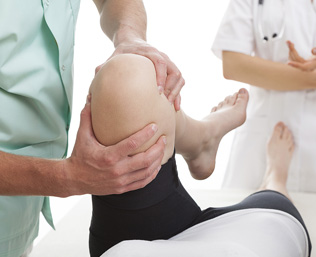
Sports Medicine
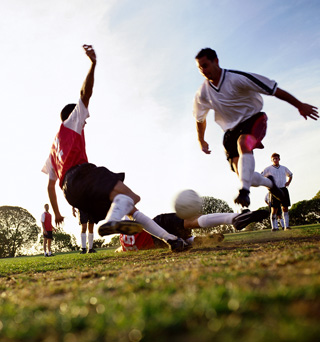
- Injury Assessment, Treatment, Education & Prevention
- Athletic Training Outreach
- Overhead Athlete (Throwing Injuries)
- Sports Performance Enhancement
- Running Injuries
- Throwing Injuries
Repetitive throwing can be part of the cause of a wide array of injuries common to baseball and softball. Especially in today’s competitive sports environment, baseball and softball are commonly played throughout the year, with little attention to proper strength development and maintenance.
Recently, much attention has been given to pitcher’s elbow injuries, especially rupture of the Medial Collateral Ligament. Common also to the elbow and less severe, are muscle strains. Pitch Counts are also important to lessen the strain on the youthful arm.
In the act of throwing, the posture and movement of the shoulder upon the body will dictate the position of the arm and subsequently, the elbow. Force is generated in the legs, propelled through the trunk, arm and lastly the elbow, where much compensatory action can take place, with subsequent overuse and strain.
In recovery from a throwing injury, we work from the arm back through the body and your relationship to the ground, to ensure natural movement. Interval throwing and in season independent maintenance then becomes key.
Marc has been a Athletic Trainer, certified by the National Athletic Trainers Association (www.NATA.org) for 33 years and a Physical Therapist for 28 of those past years As part of a sports medicine team, he is highly qualified to help return you or your injured athlete back to the playing field quickly and safely.
Worker's Compensation / Rehabilitation
- Work Rehabilitation
Sciatic Pain
Sciatic pain, or sciatica, can be persistent and debilitating, and often not from a known cause. Located in the buttock and often extending through the back of the leg, it takes it’s name from the Sciatic nerve which runs through the back of the leg after exiting the vertebral column from segments L3 through S1.
Pain occurs from tension upon the nerve causing either local pain or pain secondary to limited movement of the nerve, causing added tension. This entrapment of the sciatic nerve can be from a herniated or bulging lumber disc or from the Piriformis muscle deep in the buttock or a combination of the two. Prolonged pressure or tension upon the nerve can lead to muscle weakness, which if not irreparable, is very slow to return, dependent upon its nerve supply.
How does physical therapy deal with such a disorder? It is very important to gain an appreciation of he causative mechanism, which are usually lower extremity and pelvic girdle related. In general walking and functioning, compensatory mechanics, often due to repetitive and excessive foot pronation which begins a compensatory lower extremity internal rotation, hip and Piriformis muscle tightness. This rotation alters pelvic girdle function and can subsequently lead to lower lumbar vertebral hypermobility and it’s own effect upon the lumbar nerves. Anatomy of the Piriformis can on its own, can lead to the disorder. Cadaveric dissection has revealed that 1 out of 6 specimens, the Piriformis was perforated by the Sciatic nerve. Usually, the nerve runs behind the muscle, the close relationship leading to adverse tension.
Correcting the gait and functioning mechanics, restoring the proper flexibility and strength supporting the lower extremity, hips, and pelvis accompanied with an understanding of posture and causative details, goes very far in correcting a quite debilitating condition if there is not irreparable nerve damage which has already occurred.
Low Back Pain - What Can Be Done
The lumbar spine, built to keep our trunk and arms up and useful, is a frequent site of pain. When the legs and hips are not functioning optimally, The lumbar spine must frequently compensate to keep us moving. Over time this excessive motion of the spine can lead to disc degeneration and sometimes sciatica
The sacroiliac joint is frequently painful as the lack of hip mobility can focus needed movement at the joint.
In both situations, regaining the proper hip and lower extremity mobility And strength while regaining your lumbar and trunk strength can give your back the strength and proper support to function.
Shoulder Pain - What Can Be Done
Muscles of the rotator cuff, originating on the scapula or shoulder blade, insert into the upper arm. These muscles are important proper support and use of the arm and are especially challenged with over head use.
As the scapula is dependent upon the chest and thoracic wall for stability, a focus on the scapular/ thoracic as well as rotator cuff muscles is required.
Often, with dysfunction and muscle weakness, internal structures such as the labrum, Biceps tendon, and various bursas can become problematic. As the dysfunction progresses, articular cartilage, muscular tendons and bone itself can become problematic leading to tears, bone spurs, and joint degeneration.
It is imperative to regain the global strength and mobility of the shoulder to allow more stress free movement
Running Injuries - What Can Be Done
Too often it is assumed that man needed running shoes to run. Much research as shown that gait alterations using running shoes provides non normal force accommodation and gait mechanics. We certainly are able to run dysfunctionally, compensating through pronation in our gait to give us
knee pain, IT band syndrome, hip pain, tendinitis and degeneration as well as shin pain, Tibialis Posterior tendinitis, ankle and lumbar pain to name a few.
Regaining the proper lower leg and hip strength and mechanics can go a long way to regaining and improving upon your running ability. Shoes are variable and can be found to suit your needs.
Neck Pain and Injuries
Frequently, when we see a neck problem, there is an underlying postural dysfunction leading to abnormal forces acting at the neck. The scope of treatment is dependent on evaluating the thoracic and cervical spine to appreciating the global nature and extent of the neck dysfunction.
Treatment can include heat, soft tissue and spinal mobilization as well as restoring the normal spinal postural, strength, and function. In some cases, traction is used to alleviate local pressures on the neck.
The Road to 60
Evolution, the transmitting of DNA material over the course of time seen to allow for hereditary changes to come down through time, has allowed everything under the sun and under the sea to adapt to current environments to prosper, survive to carry on adaptable traits. Therefore, everything is the product of what came before it in time. I have found recent joy and intrigue in relating to American Revolutionary Patriots of 242 years ago. Without pictures we know they were two legged people like ourselves with useful arms and sensory organs. Perhaps there are genetic traits altered over six generations, but did they need to adapt to wide changes? Maybe they were not too dissimilar to us. Now take one million years, which we cannot really fathom, and imagine gradual genetic trait transition over maybe 25,000 generations. This does not even take us back to fossils of Homo Erectus of almost 2 million years ago. Certainly, we can know from what the fossil records tell us, but conceding to the fact that everything came before us, we can assume that we have evolved to the present time.
Why do we look like we do? Why do we move like we do and interact with the world like everything else does? Because, like Richard Dawkins, in “ The Selfish Gene,” our genes have seen to their survival with the traits needed to survive. Were we not properly relating to the world with our automatic sensory responses and physiology, we would not be long for the present world.
So, if we can come to terms with our evolutionary past and appreciate what we are, say destined for, especially in movement, we can use that to our advantage to see to it that we can reach our later years in better maybe more optimal physical health.
Our bodies, the physical skeleton, muscles and their connections with the nervous system seem to have evolved to allow us to move from one place to another. This assured our survival in being able to run or walk away from danger or to things of benefit for us. Looking at vertebrates, they all have a spine and limbs as well as a brain case and organs to help make sense of the world around. Do we use our physical bodies as they have evolved? If not, is there a long term consequence seen in early joint, vertebral disc, or muscle degeneration or just physical bodily health?
We don’t know the answer which to obtain would require some science. People move and move around like they perhaps have for a long time. Unfortunately, it seems that our senses tell us when there is danger, or problem exciting the nervous system. This could be inflammation or out right disease. If it is inflammation of the joint or musculotendinous tissues The inciting mechanical movement change or alteration could be going on for a while and tolerated until the system’s tolerance was breached.
Can we know this? Can we see this? And institute changes needed to capture our innate evolved movement preferences to allow a more natural movement and lessening stresses as we move down the path, the road to next year and the year after that.
The Road to 60 - Evolution
Movement has been key to our survival both to move towards food and safety as well as away from dangers. Our musculoskeletal system has adapted over several hundred thousand years to allow efficient movement.
The differentiation of animals today can be seen as each having found a niche where they can seek to survive and thrive. The similarity of skeletons can be seen as a remnant of the similarity of initial place and purpose all, at least mammals have come from. Somewhere along the way, perhaps to better adapt to a changing environment, man went from quadruped to bipedal continuing this path today.
The important fact for us here is the innate mechanics we have adapted with are synonymous with barefoot mechanics guiding our movement. We can run and we can move certainly, protected by a variety of shoes, but are we functioning naturally then? How would we know? Certainly the body has an ability to tolerate abnormal stresses for some time, but when will we see the cumulative effect of compensatory mechanics as
we left our natural mechanics behind.
Consistently, lower extremity pain and dysfunction is seen with underlying abnormal mechanics, the result of compensatory function in movement. Think, if we were moving so well, why would we become injured, why would our spines and joints degenerate?
Regaining our long lost, but hidden mechanics is key not only to injury recovery, but as we age and move towards 60+ years, we can reduce the stresses imposed upon the body and enjoy renewed movement.

